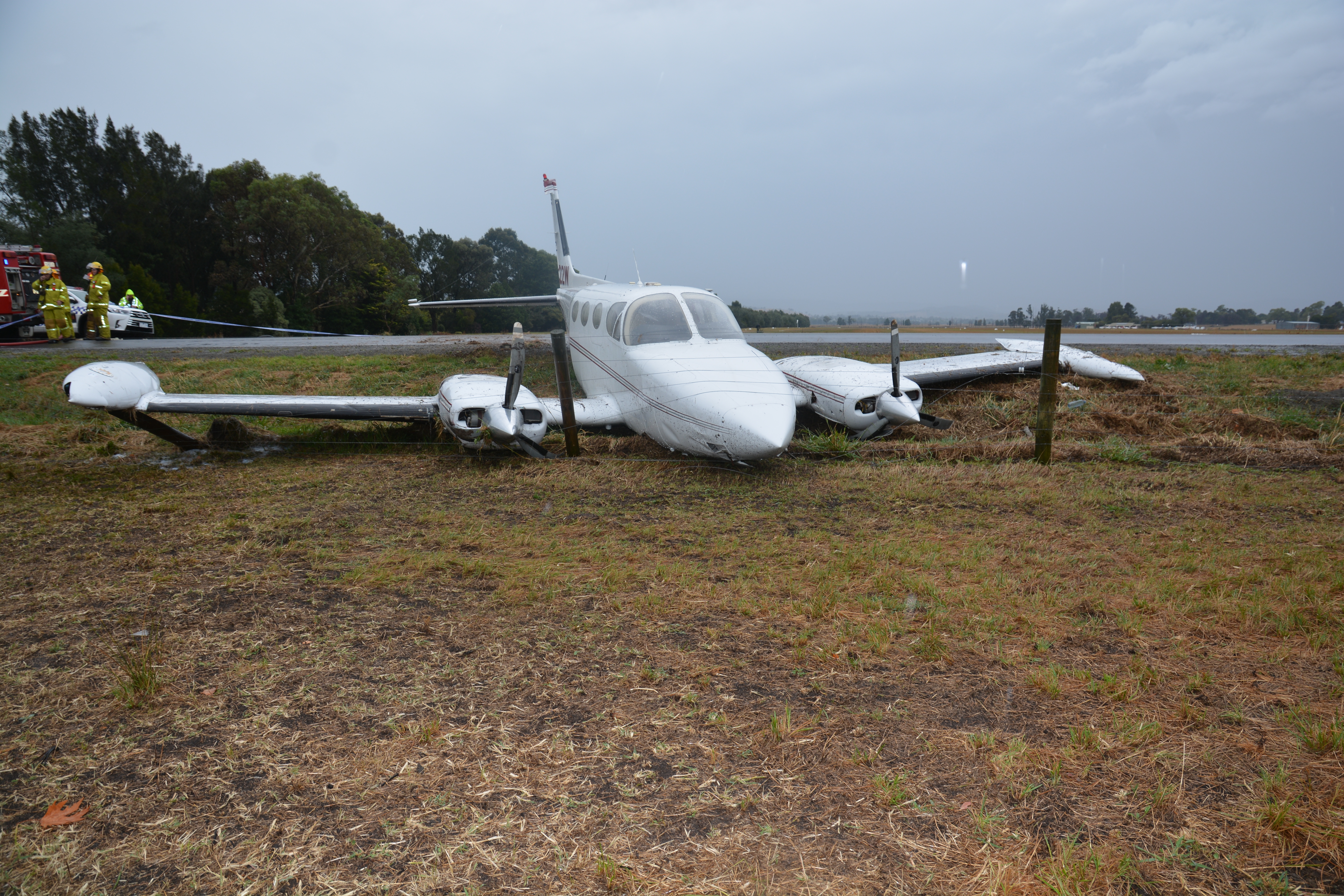| Occurrence Briefs are concise reports that detail the facts surrounding a transport safety occurrence, as received in the initial notification and any follow-up enquiries. They provide an opportunity to share safety messages in the absence of an investigation. |
What happened
On 24 March 2018 the pilot of a Cessna 340 was on a private flight from Bankstown, New South Wales to Lilydale, Victoria. The aircraft was operating under the instrument flight rules (IFR)[1]. The aircraft arrived at Lilydale at 1205 Eastern Daylight-saving Time.
During descent into Lilydale the pilot reported passing through broken cloud and becoming visual with the airfield. The pilot then cancelled IFR and proceeded to overfly the airfield to inspect the runway and windsock. The windsock indicated little wind. There was rain forecast in the area and showers in the vicinity, however there was no rain reported over the airfield at the time of arrival.
The pilot conducted a normal approach and touched down 250-300 m down the 850 m grass runway. After touchdown, the pilot applied moderate braking force. After realising that the aircraft was not slowing, the pilot applied further braking. The aircraft failed to slow and the pilot confirmed the throttles were at idle and pumped the brakes. The aircraft continued to slide down the runway. As the aircraft approached the end of the runway, the pilot applied full left rudder to turn the aircraft which resulted in a slight veer to the left. The aircraft collided with an embankment at the end of the runway, passed over a road and coming to rest against a fence (Figure 1). The aircraft was substantially damaged, and the pilot was not injured.
Post-flight it was determined that the airfield had received significant rain within around 1 hour before the landing which may have resulted in aquaplaning[2]. The pilot reported that flap was set at 30 degrees for landing, less than the maximum available of 40 degrees. Contributing factors to the overrun include;
- wet grass runway (with possible standing water)
- nil wind conditions
- selection of less than full flap
- touchdown one third down the runway.
Figure 1: Final resting position of the aircraft

Source: Victoria Police
Safety message
Wet runways present a hazard as the braking ability of the aircraft may be limited, particularly if there is standing water. Pilots should familiarise themselves with the pilots operating handbook for their aircraft and make allowances for runway length, size, slope, construction and condition.
__________
- Instrument flight rules (IFR): a set of regulations that permit the pilot to operate an aircraft in instrument meteorological conditions (IMC), which have much lower weather minimums than visual flight rules (VFR). Procedures and training are significantly more complex as a pilot must demonstrate competency in IMC conditions while controlling the aircraft solely by reference to instruments. IFR-capable aircraft have greater equipment and maintenance requirements.
- Aquaplaning: occurs when a layer of water builds up between the tyres and the runway. This results in loss of traction, preventing effective braking and aircraft control.


